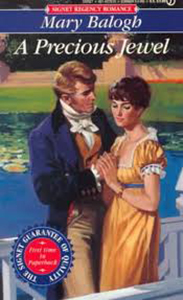 I’m always interested in the keywords used to describe books. Having already talked about what “sweet” means with regard to Regencies, I’m moving on to “traditional”.
I’m always interested in the keywords used to describe books. Having already talked about what “sweet” means with regard to Regencies, I’m moving on to “traditional”.
There are various explanations of how traditional Regencies differ from Regency-set historical romance.
Traditional Regencies are short. But some of the older ones were 80,000 words or more, especially those published as Super Regencies.
Traditional Regencies are “sweet.” There are many exceptions, including some books by the Riskies. Sweet historical romance also exists.
Traditional Regencies depict the world of the Regency as described by Jane Austen and/or Georgette Heyer. True to a degree, but neither of them ever included paranormal elements like vampires. Or time travel. Or Greek deities who take a mischievous role in the characters’ love lives.
 Traditional Regencies are historically accurate. Not always! I’ve heard there was a Zebra Regency that included photography as if it were in common use. I’ve also read traditional Regencies with errors in titles, fox hunting in the summer, etc…, and many that seem to rely almost entirely on Georgette Heyer for background information. Although we know she did meticulous work, the sensibility in her books is largely Victorian.
Traditional Regencies are historically accurate. Not always! I’ve heard there was a Zebra Regency that included photography as if it were in common use. I’ve also read traditional Regencies with errors in titles, fox hunting in the summer, etc…, and many that seem to rely almost entirely on Georgette Heyer for background information. Although we know she did meticulous work, the sensibility in her books is largely Victorian.
One other point is that many authors of Regency-set historical romance do extensive research (I do!) although they may incorporate aspects of the setting that were not seen in books by Jane Austen or Georgette Heyer.
Traditional Regencies are light and witty “comedies of manners”. There were some pretty angsty traditional Regencies, dealing with substance abuse, PTSD and other serious themes.
 So even while some of these traits often describe traditional Regencies, it seems to me that the only simple definition is those books published in the traditional Regency lines. Of course, now there are indie authors and specialty lines who publish what are generally agreed to be “traditional” Regencies.
So even while some of these traits often describe traditional Regencies, it seems to me that the only simple definition is those books published in the traditional Regency lines. Of course, now there are indie authors and specialty lines who publish what are generally agreed to be “traditional” Regencies.
 The only definition I’ve been able to come up with that makes sense is that in a traditional Regency, the Regency setting is more consistently emphasized, described in detail (even if the detail may be incorrect or copied from Georgette Heyer), and that the setting often takes on an importance almost as if it were a secondary character.
The only definition I’ve been able to come up with that makes sense is that in a traditional Regency, the Regency setting is more consistently emphasized, described in detail (even if the detail may be incorrect or copied from Georgette Heyer), and that the setting often takes on an importance almost as if it were a secondary character.
So what do you think? What makes a Regency “traditional”?
Elena
www.elenagreene.com
